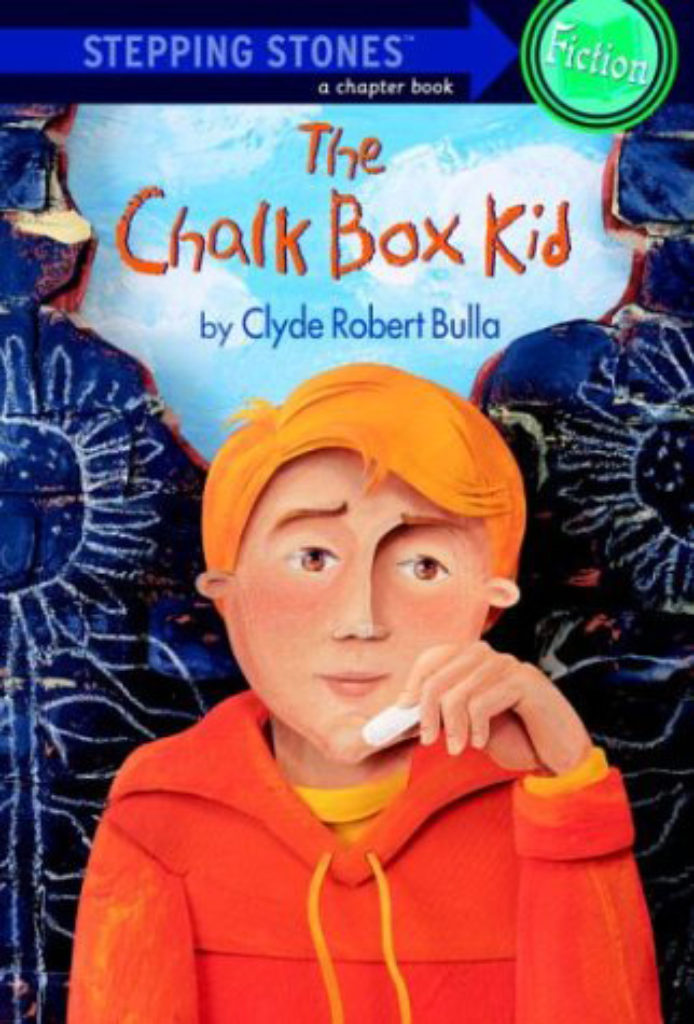The Chalk Box Kid by Clyde Robert Bulla has been reviewed by Focus on the Family’s marriage and parenting magazine. It is the first book in the “Chalk Box Kid” series.

The Chalk Box Kid by Clyde Robert Bulla has been reviewed by Focus on the Family’s marriage and parenting magazine. It is the first book in the “Chalk Box Kid” series.
On his ninth birthday, Gregory is stuck watching TV with his aunt. His parents are gone, fixing up their new house. They’re moving since Dad lost his job and got a new one. Gregory’s parents surprise him by taking him to the house and showing him his bedroom. He’s never had a room of his own, and he thinks it is the best birthday ever.
The next day, he hangs some of his artwork in his new room. Mom tells him Uncle Max is coming to stay for a while. Uncle Max is a 20-year-old, out-of-work guitar player whom Gregory finds self-centered. Gregory is unhappy about having to share his new room, especially with Max.
Gregory starts at his new school the following day. His teacher asks about his old school, and he says it was bigger than this one. Because of this remark, a boy named Vance and some of the other classmates accuse him of bragging. Gregory returns home to discover Max has pinned race car posters on top of his artwork. Angry, Gregory leaves the house and explores the ruins of a fire-ravaged building behind his house, where three brick walls still stand. Gregory finds it peaceful. He sits in the ruins and looks at the sky.
Gregory begins to clean up the ruins. As he’s sweeping, he finds something white that looks like chalk. His mother confirms the building used to be a chalk factory. Gregory finds some old boxes of chalk and begins to decorate the walls of the building. He’s inspired when a guest speaker, a nursery owner named Mr. Hiller, talks to his class about gardening.
Although Gregory has no place for a garden, as all of the ground near his house is concrete, Gregory begins to draw plants on the walls of the ruins. He draws a pool and fruit trees with birds’ nests. He often talks about his garden at school, so eventually Vance his other classmates go look in Gregory’s backyard.
When they see his “garden” on the walls of the ruins, they say it is nothing at all. One shy, artistic classmate, Ivy, starts to speak to Gregory, then slips away. The next day, Ivy wins a paint set for being the best artist. She tries to give it to Gregory. She tells the teacher, Miss Perry, about Gregory’s garden and says he is the better artist.
Miss Perry tells Ivy to keep the paints, but says she and the art teacher, Miss Cartright, would like to see Gregory’s garden. The teachers are impressed. They show Mr. Hiller, who asks if he can come back and photograph the mural. He hangs the photos in his nursery.
Gregory’s parents come out to see the garden and believe their son will be famous someday. Even Uncle Max is impressed. He takes down his race car posters so Gregory’s artwork graces the walls of their room once more. The kids at school start treating Gregory better, and Ivy brings her little brother to see Gregory’s garden. Gregory invites Ivy to help him draw a fountain in it.
None
None
Gregory’s mother is a cook in a restaurant. His father, who lost his factory job, is now a bank guard. They are caring parents who are proud of his artistic abilities. His homeroom teacher, art teacher and the garden shop owner are also excited about and supportive of his artwork.
None
None
Get free discussion questions for this book and others, at FocusOnTheFamily.com/discuss-books.
You can request a review of a title you can’t find at [email protected].
Book reviews cover the content, themes and worldviews of fiction books, not their literary merit, and equip parents to decide whether a book is appropriate for their children. The inclusion of a book’s review does not constitute an endorsement by Focus on the Family.